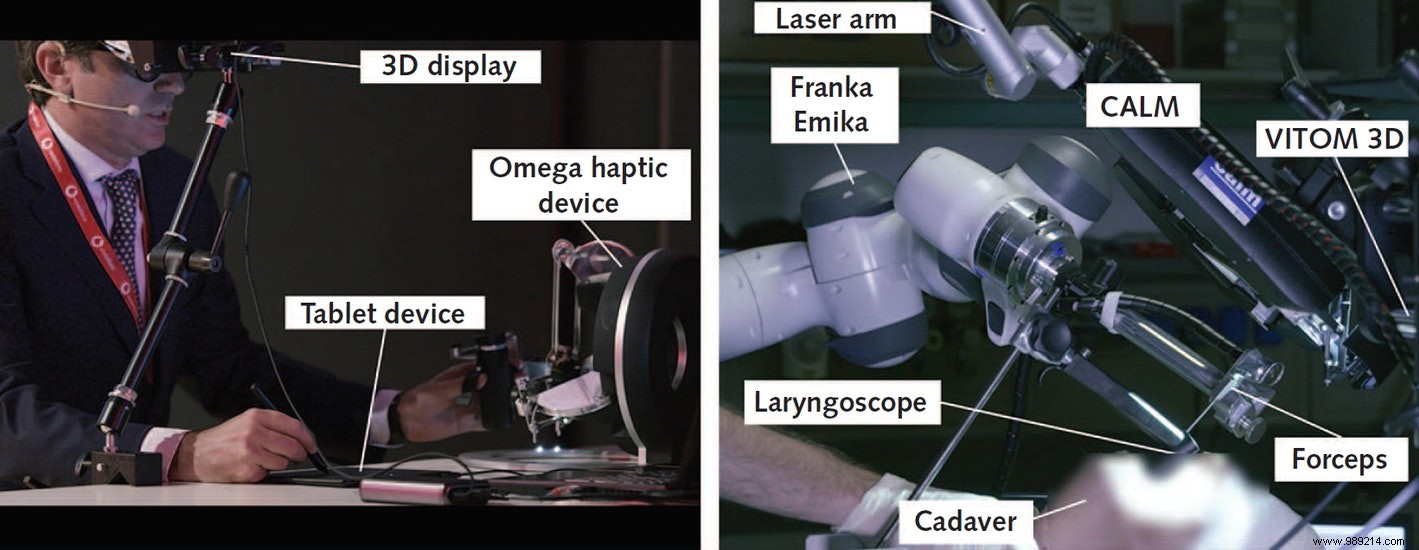A team of Italian doctors has demonstrated that it is possible to carry out invasive surgery on a patient 15 kilometers away thanks to the 5G network. The case report was published this Monday in the journal Annals of Internal Medicine .
Telescopic surgery is not new. The first operation was completed almost twenty years ago, on September 7, 2001. At the time, a 78-year-old patient, hospitalized in Strasbourg, had successfully undergone the removal of her gallbladder. The surgical team was 7,000 kilometers away , in New York.
The intervention was thus carried out on site by a surgical robot remotely controlled by Professor Jacques Marescaux and his team. The two sites were linked by a dedicated high-speed optical fiber. This device was then able to convey all the required information in less than 200 milliseconds .
This first success of telesurgery has made it possible to consider promising applications. We then imagined this type of approach in areas where surgical skills would be reduced. Or in the context of certain very complex operations.
Several of these operations have obviously taken place since then. However, efforts in this area have long stagnated due to the rather slow progress made in communication networks. The emergence of 5G could nevertheless give new impetus to this type of practice.
In a recent study, Italian surgeons tested the approach, relying on one of these networks to conduct cord surgery vocals from 15 km away .
Two local assistants first prepared a corpse for surgery. They also defined the parameters of the remote tools that should be used. With the "patient" finally prepared, surgeons then took turns operating on his vocal cords using remote-controlled forceps and lasers .
To do this, the doctors had virtual reality glasses as well as a tablet and a haptic feedback device for controlling robotic devices remotely.

Despite the distance, Leonardo Mattos, head of the biomedical robotics laboratory at the Italian Institute of Technology, spoke of a real sense of immersion.
“The surgeons felt like they were right in the room, he explains. They also felt less stress during delicate actions because the robotic devices provide great stability and smooth movements. This allows them to be more precise and confident during the operation .
Overall, the operation went well. According to the study, surgeons only experienced a maximum of 280 milliseconds of lag time between commands and robot actions . Although it only focused on the vocal cords, Leonardo Mattos points out that there are few limits to the types of surgery for which this approach could be used.
“The technology can be used for other types of laser surgery, but also be adapted for other types of robotic surgery , he explains. Basically, we could confidently say that if surgery can be performed robotically today, it can also be performed telesurgery .
This study presents a proof of concept here (hence the corpse). But it will still take several years before this type of surgery is democratized. Technically, the few challenges still to be overcome can be overcome quite quickly, explains the researcher. On the other hand, the legal and ethical repercussions of such approaches may be a more enduring problem.